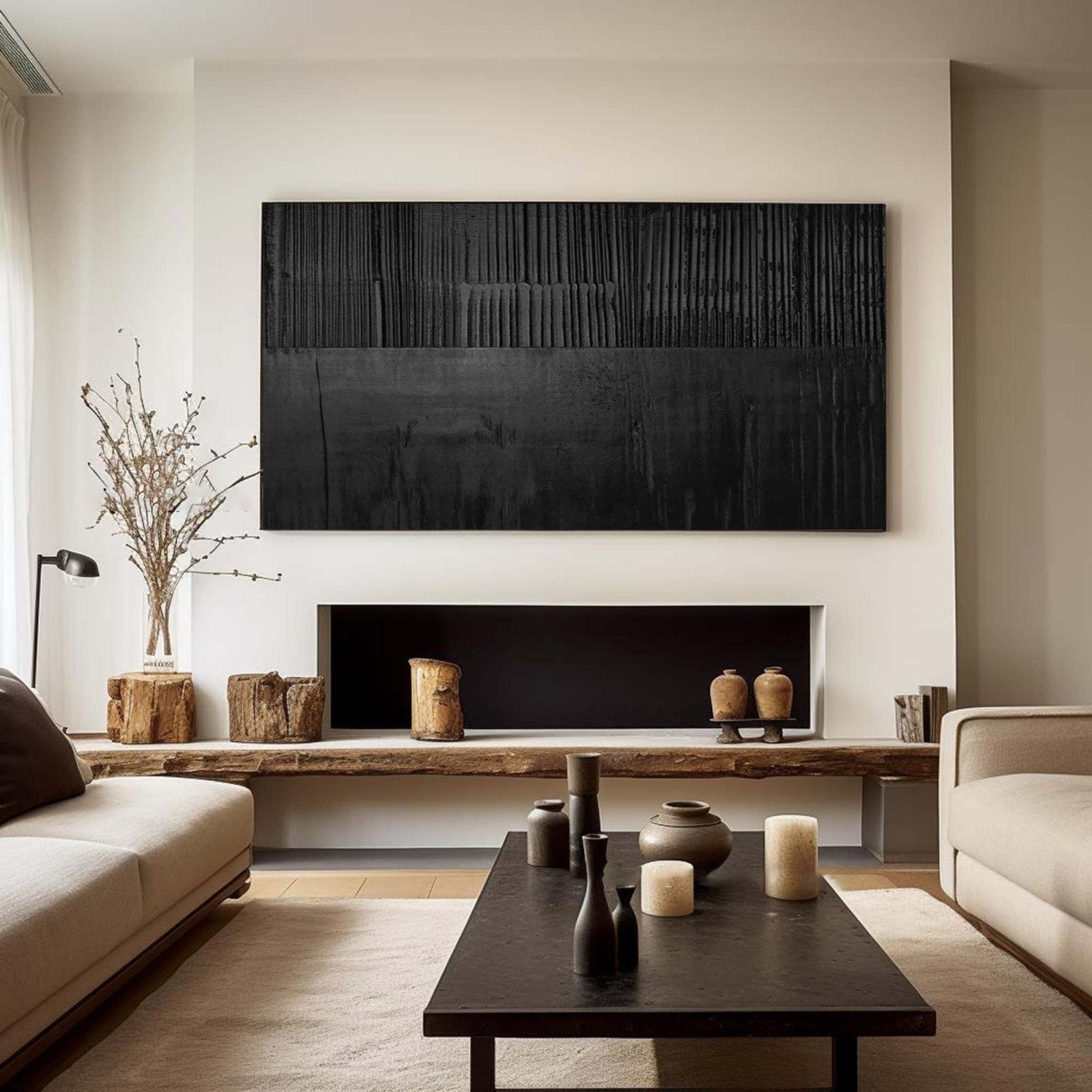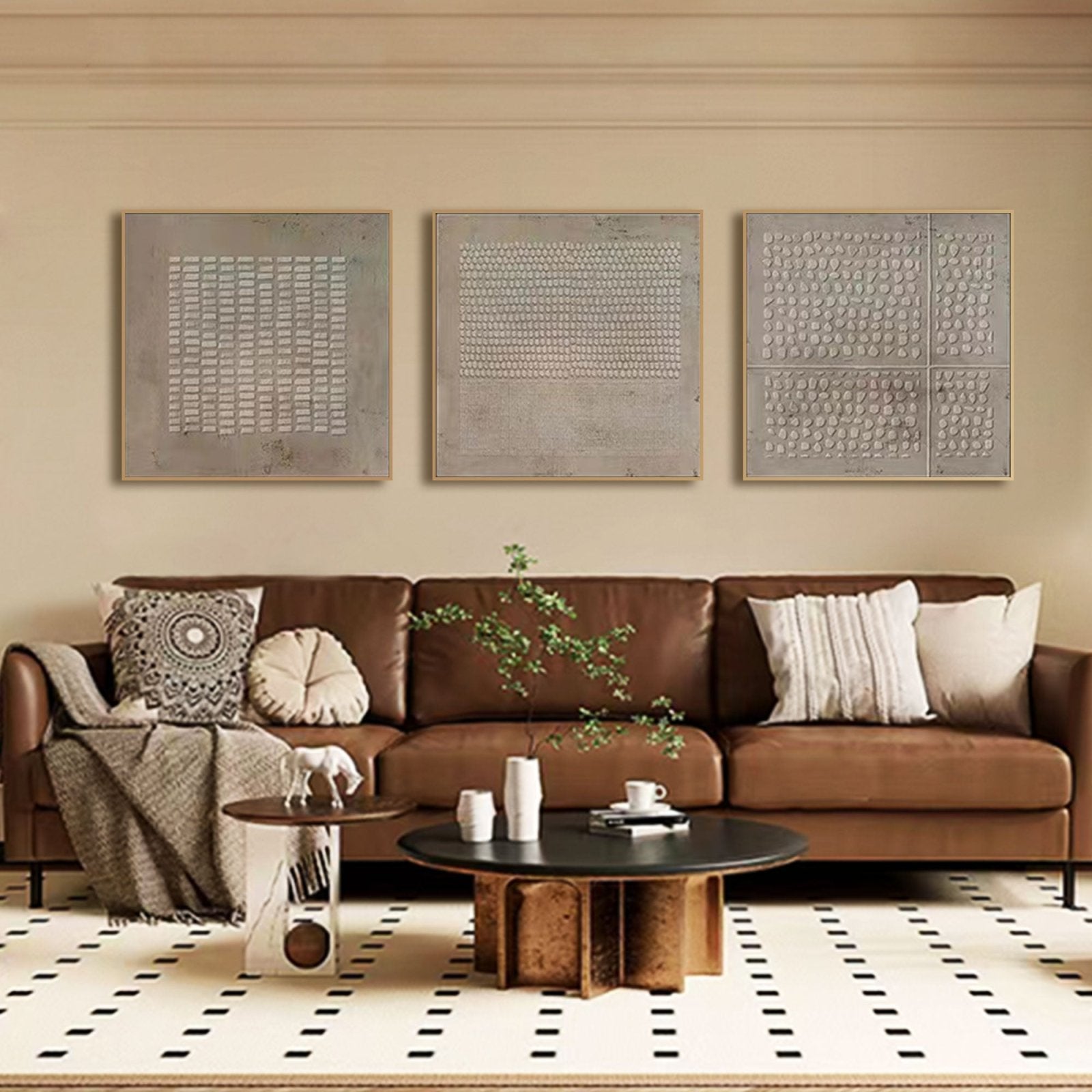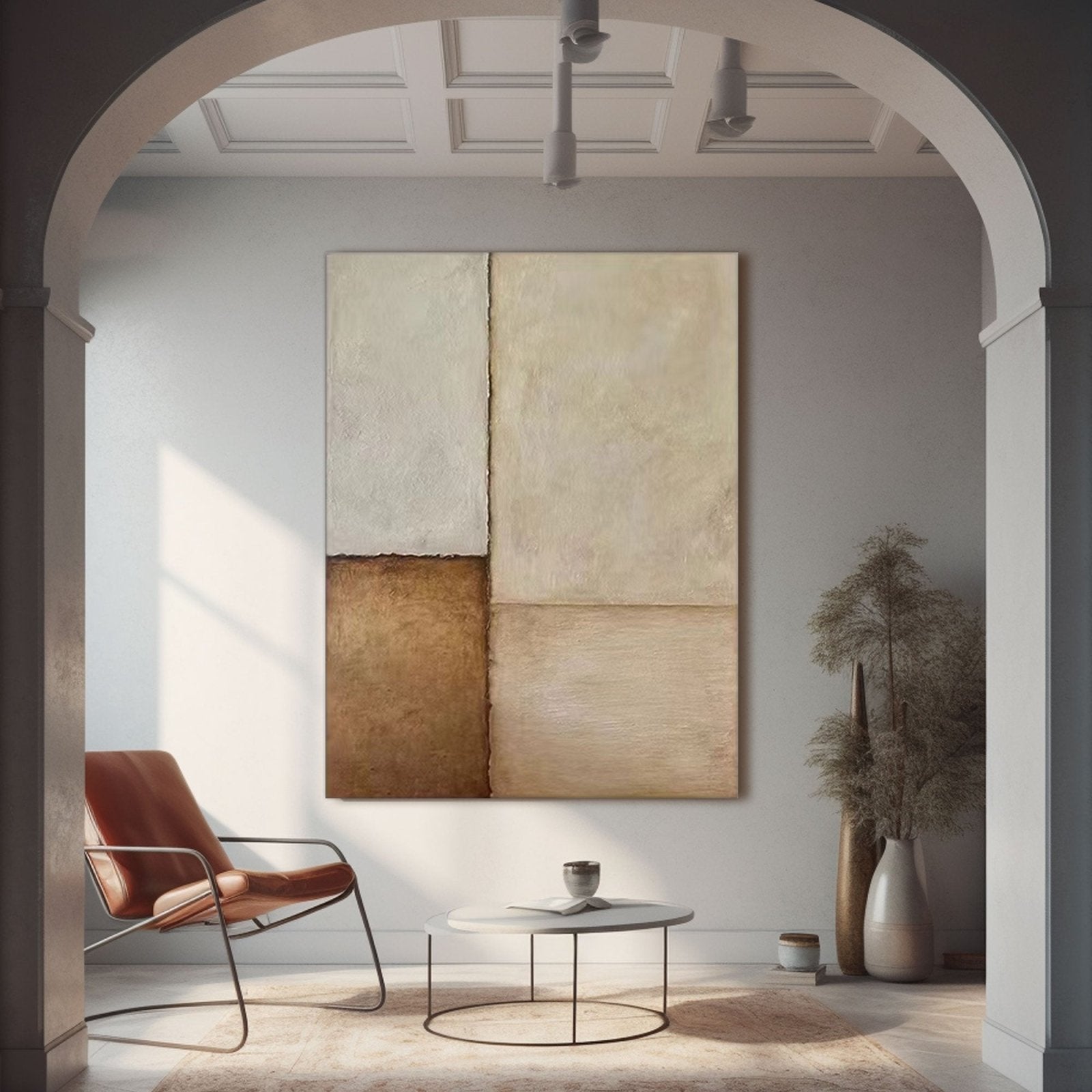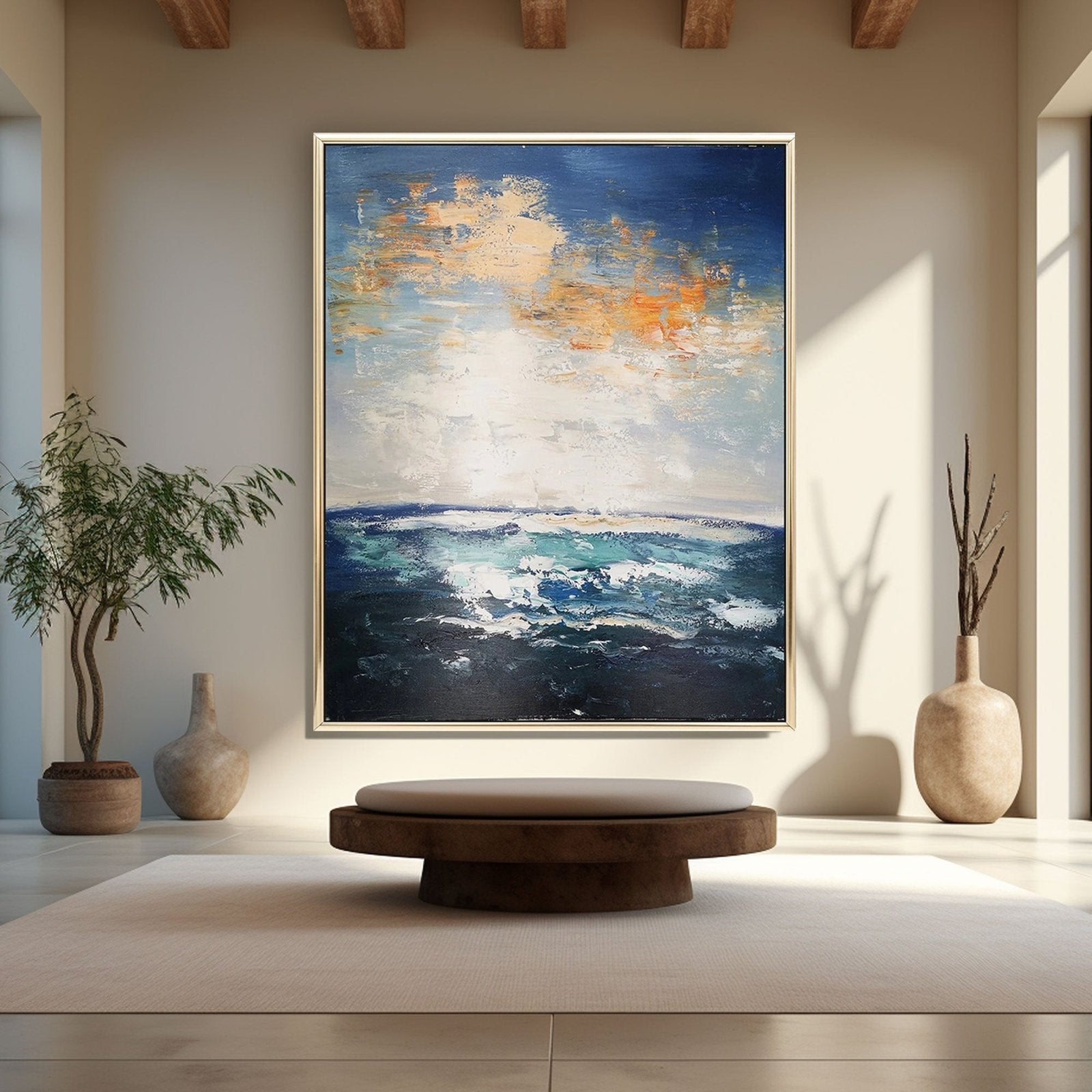
What is wabi sabi art
Catalog:
- Introduction
- Origins and History of Wabi-Sabi
- Core Principles of Wabi-Sabi Art
- Aesthetic Characteristics of Wabi-Sabi Art
- Visuals from the Nukeart Collection
- Wabi-Sabi's Influence Beyond Japan
- Final Words
I. Introduction
Wabi-Sabi is the Japanese aesthetic that values flaws, transience, and imperfection. Born from the heart of this country's art and philosophy, it glorifies the circular process of birth, maturation, and rotation. Conceptually, this idea has evolved over the years, infusing modern domestic interiors with qualities of minimalism and purity.
Nukeart represents this philosophy incorporating eco-friendly components such as natural pigments and recyclable packaging, and utilization of which leads to not only expressive art but also sustainable products.
Nukeart, in its role of importing wabisabi design elements, seeks to change the lives of people by honoring what is imperfect and dwelling on what is left to nature. This article presents the roots of Wabi-Sabi which is a form of art used in contemporary interior design in line with Nukeart's deliberate focus on environmental sustainability and artistic expression.
II. Origins and History of Wabi-Sabi
Roots in the Japanese Tea Ceremony Pointing Back to Tradition
Wabi-Sabi comes from the Japanese tea ceremonies of the 15th century, during which their practitioners attached importance to simplicity and footness. The process focused on the utilization of organic, frequently scarce materials, featuring the temporary character of life. Tea masters such as Sen no Rikyū were instrumental in adding Wabi-Sabi into these ceremonies, bringing in appreciation for the imperfect, the modest, and the casual.
Connection to Buddhist Principles
The Wabi-Sabi philosophy immensely shares with Buddhist teachings, especially on the temporary nature of all things (anicca) and the ordinary face of life (dukkha). In Buddhism, everything is transitional and imperfect yet beautiful. With such a philosophy, we can welcome the natural cycle of growth and decay and naturally find peace in the presence of the world of nature.
Trends and impact on current art manufacturing and interior design
The historical and cultural base of Wabi-Sabi is still expressed in avant-garde art and modern interior design. Therefore, this style stands for the natural beauty of materials and simple shapes. It reveals the difference between new and worn products as well.
Such examples could be the collection by Nukeart with items such as "3D Textured Faces of Tenderness" and "Abstract Painting Symphony in White" and they demonstrate how the Wabi-Sabi concept impacts modern interior design. It is these pieces that illustrate how art wabi sabi is assimilated into modern living spaces using large textured wall art, subtlety, and perceptual flawlessness transformed into beauty, by the artists.

III. Core Principles of Wabi-Sabi Art
Wabi Sabi art is based on three key principles which encouragement of the amazing nature and human experience is the most significant. These principles, namely - imperfection, impermanence, and incompleteness - are often in contrast with those that hold static, timeless, and structured beauty as most aesthetically pleasing. This interplay of elements results in the formation of an original style that emphasizes both genuineness and bygone times.
A. Imperfection
1. Embracing Flaws and Asymmetry
Wabi-sabi art goes far beyond what is perfect and purity is found in unrefined and art of imperfection wabi sabi things. The geometric style does not aim for the perpetuation of the same forms and the search for perfection, but it cherishes the unique character that possesses irregularities and asymmetrical designs. This view helps artists to explore their creative sides and discover beauty in unusual or nontrivial places.
2. Celebrating the Beauty of the Imperfect
Peculiarities and defectiveness are approached by Wabi-Sabi disregarding the usual criteria of beauty. Repairing cracks, chips, and uneven surfaces, however, do not look like defects - rather they imply history and are respectable. Such a technique provides viewers with an opportunity to take note of the art's complexity and history.
B. Impermanence
1. Acceptance of Transience and the Passage of Time
One of the basic characteristics of the concept of Wabi-Sabi is the ability to take life with its fading nature. Art that is true to this concept becomes stained, old, and mutated, implying the inevitable transformations every age goes through. This acceptance results in a deeper bond with life today and with the natural world.
2. Representation of Aging and Weathering
In the art of Wabi-Sabi, it is quite common to incorporate age-defying elements, such as the patina on metal or the weathered wood map. These factors not only give a work of grafiti art its aesthetic value but are also a story of endurance and the passing of time, a story that may make all of us think about the changes and the passage of time in our lives.
C. Incompleteness
1. The Charm of the Unfinished
In Wabi-Sabi, the idea of unfinished is addressed with its beauty and opportunities. The art that is deliberately left incomplete invites the viewers to use their imagination and embrace the object as a dynamic and living entity.
2. Artistic Explanations of the Incomplete
In artworks that convey incompleteness, artists usually include elements that are left deliberately unfinished or unpolished. This could be a sculpture having rough edges or a painting with visible brushstrokes and untouched areas. These characteristics attract the eye to the creative process, which is always ongoing and which draws attention to the beauty of unfinished paintings.

IV. Aesthetic Characteristics of Wabi-Sabi Art
The wabi-sabi aesthetic perspective that is widely used in decorative art is accomplished through the application of several techniques that are intended to display natural beauty, simplicity, and the work of time on objects. The artistic practice of 3d abstract art faces by Nukeart, "3D Textured Faces of Tenderness" and "Abstract Painting Symphony in White" can be taken as examples of this fact. In the subsequent section, a description is given of how the principles of Wabi-Sabi are illustrated in their art and decoration.

A. Primary Focus Natural Stuff and Textures.
1. Natural and Subdued Textures
Incorporated in Nukart's pieces, there is natural pigments and textured painting canvas. These produced by nature form a raw and rough effect that emphasizes the primary flaws, originality, and particular characteristics of each material. The use of multiple layered natural pigments emerging from the surface brings out an impression of a rougher uneven texture that is much the same as the things that we see around us making it authentic and more appealing.
2. Texturing and a Form of Touch.
The rich textures of the plaster wall art provide viewers with a feel-like-touch perspective, enhancing their engagement with the artworks. For example, the use of layered elements, as well as the availability of thick paints or pastes, produces a textured canvas wall art surface that is capable of catching light and shadow which adds to the overall visual and tactile impression. Over there, the artist has used a "Patchwork quilt" technique of adding different textures, thus achieving harmony between the obscure and the detailed.
B. Emphasis on Simplicity and Minimalism
1. Reduction to Essentials
By removing unessential parts, Nuclear's art pieces only show the center element of it. By using simple forms and a colorful wall art with few colors this design attains minimalism. The piece "Abstract Painting Symphony in White," for example, uses varied shades of white and off-white, to achieve a soothing and peaceful mood, with the texture and form further highlighting the primary elements of the work.
2. Steep away from excessive ornamentation.
The design philosophy adopted by Nukeart is not overburdened with extravagant appearance, rather it relies on the appeal of materials and simplicity of composition. It is this specific restriction that keeps every part how it should be by which the wabi-sabi aesthete is preserved. The purposeful decision to use these details, such as brushing a stroke that is marked and results in uneven edges, is one of their work's more subtle attractions.
C. Subtlety and Modesty
1. Quiet Elegance
Nuclear Art's decorative pieces such as drawings and crafts radiate in serenity with their modest and subdued natural purity. The soft blended textures and distinct colors like black and white painting bring the viewer to the little details of the artwork that then engage and captivate a longer-lasting view of the subtle allure. "3D Textured Faces of Tenderness" is a perfect example of this, and it portrays that by its gentleness, muteness, and withdrawal that results in internalized calmness and thoughtfulness.
2. Nuanced Details
Achieving a state Wabi-Sabi aesthetic is partially dependent on how much attention one pays to the small, but significant, details. The artistic works of Nukeart sometimes include intricate textures as well as minute differences in hue, which, at first glance, might not be apparent, but will need a closer look to see them. They provide broader meanings to the artworks such that a sense of beauty is derived from those things that appear to be present in trivialities.
V. Visuals from the Nuclear Art Collection
1. "3D Textured Faces of Tenderness"
- Techniques:The layering of natural pigments and creating a rough and tactile surface.
- Aesthetics:Accepts imperfections embracing texture and depth more.
2. "Abstract Painting - Symphony in White"
- Techniques:Limit the number of colors used, and thick layers of paint to achieve the desired textured white wall art.
- Aesthetics:Simplicity and minimalism with subtly visualized details emphasizing the natural unfinished wood.
These set of 3 wall art items from Nukeart's collection are great illustrations of how Wabi-Sabi ideas are used artistically to achieve handcrafted artworks that are both visually engaging and spiritually appropriate for the idea of beauty in imperfection and impermanence.

VI. Wabi-Sabi's Influence Beyond Japan
Going beyond its very own origin in Asia, wabi-sabi has brought numerous informality to global design thinking and modern aesthetics. Here, the spread and adjustments of it, especially at home decor, in the West, are covered and after that, its reception to the minimalist modern art movement and ecological designs is examined.
Furthermore, it brings into light a comparative illustration with other traditions depicting similar aesthetic notions in other cultures and illuminating the fact that the idea of Wabi-Sabi-inspired décor is universally applicable.
A. Global Adoption and Adaptation
Wabi-sabi has become a source of inspiration and is nothing new in Western homes and interior design. Its emphasis on simplicity, imperfection, and authenticity is in some taste with those desiring peaceful and friendly places. Ingredients including natural materials, a muted palette of colors & handmade artifacts are some features that have become a mark of contemporary interior designers due to the great influence of the 5 principles of Wabi-Sabi design on a global platform.
B. Influence on Modern Minimalist Movements and Sustainable Design
Wabi-Sabi, its fundamental principles which match the modern minimalist art movements and green art design, pinpoint its framework. This makes both styles equally about simplifying and restoring an indispensable part of a room, as even their names suggest, clean and zen.
Through selecting quality over quantity and acknowledging the value of imperfection, Wabi-Sabi guided decor attracts the awareness of the environment and inspires mindful consumption which is in line with one of Nukeart's main values and it means a green lifestyle.
C. Comparative Analysis with Similar Aesthetic Concepts
Wabi-Sabi, however, is the result of centuries of Japanese people's experience, and one can find other similar aesthetic concepts if one looks broadly enough. An example of such a case is a Scandinavian design that supports the factors of simplicity, functionality, and natural material which are also the characteristics of Wabi-Sabi principles.
As an example, "hygge" is also a part of Danish culture which stands on the very same ground as Wabi-Sabi, meaning that comfort, coziness, and contentment are very familiar within the atmosphere of those spaces.
The comparison that is made here underscores the cross-cultural appeal of the Wabi-Sabi and the fact that it erodes the cultural boundaries. Aesthetics only offers a timeless way of designing spaces with both beauty and meaning.

Final Words
The fact that wabi-sabi has continued its legacy in art and decor makes clear the beauty that can be found in imperfections and simplicity. Nukeart's adoption of this style and the creation of homes that are both aesthetically and spiritually fulfilling will be a result. Through the use of natural materials and simple design, the vertical wall decor of Nukart creates a bond with the present moment and the natural environment. Apart from improving aesthetics, Wabi-Sabi through Nukeart's products creates an atmosphere of calmness and originality. In our world, where everything is aimed at perfection and abundance, Wabi-Sabi shows us how to find beauty in imperfection and appreciate the quiet moments of each day.




